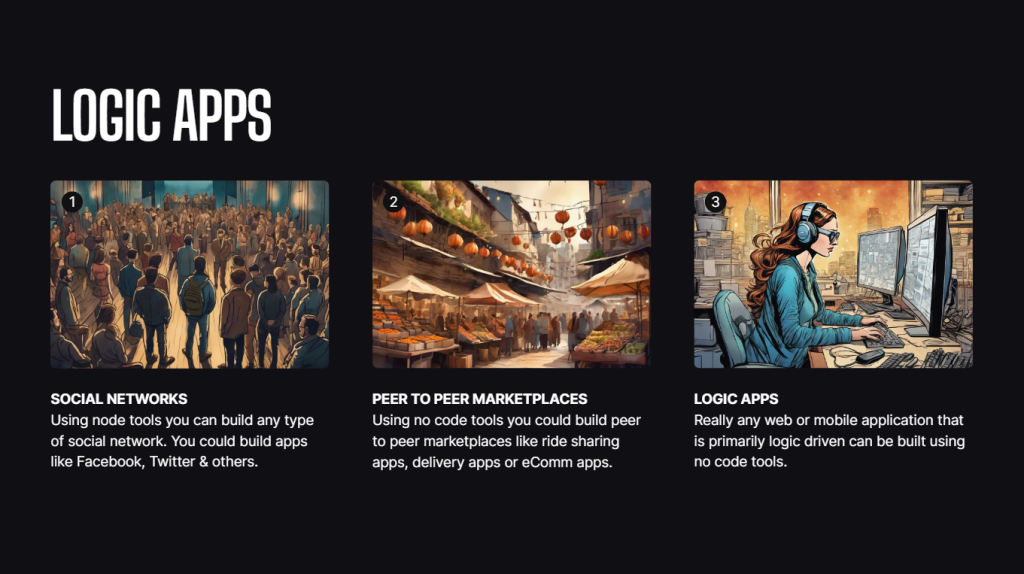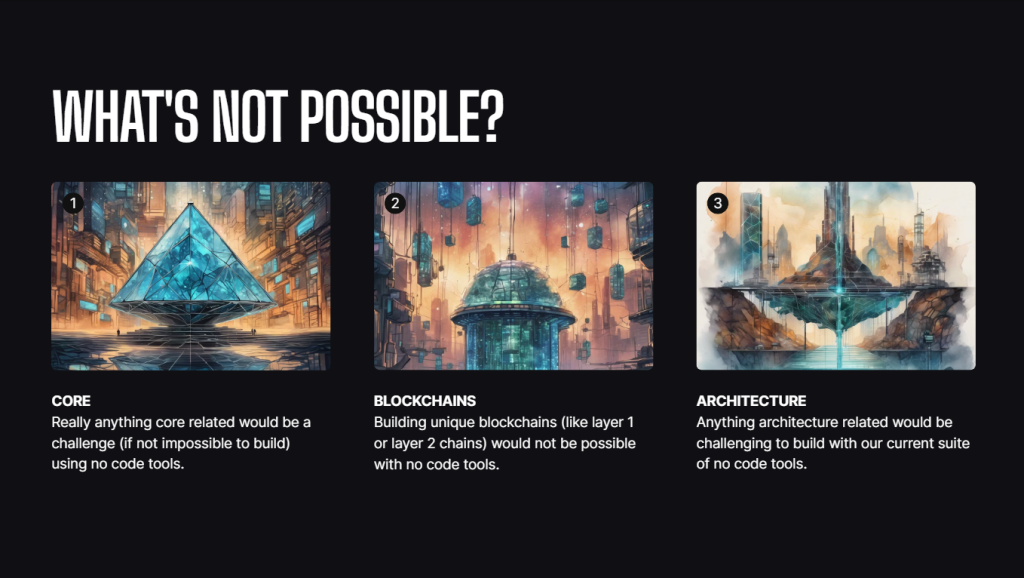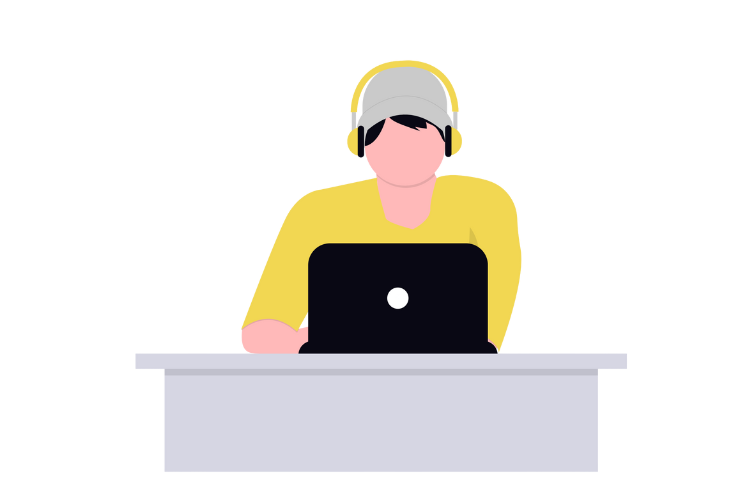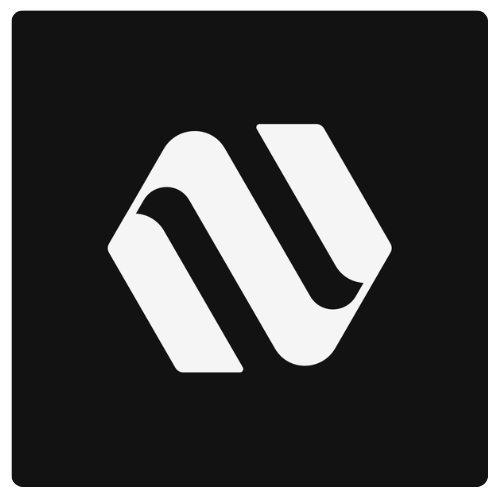NEBULUM.ONE
Complete Blockchain Developer Roadmap
In this post we’ll take a look at a unique roadmap to becoming a blockchain developer.
![]() We build with heart
We build with heart
Become a Blockchain Developer in 2025. The Fast Way.
There are various roadmaps to becoming a blockchain developer in 2025. In today’s tutorial I want to talk about a unique approach which might be desirable for those who are fascinated by blockchain tech, but who might not be proficient with any programming language or who simply want to spend more time building, and less time learning the syntax of JavaScript, Python or Solidity. Many of the devs who work at our blockcchain development agency take this approach (and we have no shortage of work).
To become a blockchain developer doesn’t need to be complicated, or even that time consuming. We live in a time when things that used to take a year to do, can now can now be done in a month or two.
Read the article below or watch the following video to learn more.
How is this possible?
This is possible due to the rise of no-code Web3 tools which allow less-technical people to build enormously technical applications that interact with blockchains like Ethereum or Solana. And before you scoff at the idea, wait around until the end, where I’ll show you how we scaled a platform in the crypto space to $16,000 / month in crypto revenue using mostly no code tools.
We live in a time where you can build pretty much anything you can dream up. To use a more recent example, this Sepolia testnet faucet over on our website sends Web3 developers Sepolia testnet tokens. Users simply enter their wallet address, hit send, and a backend automation sends crypto from one wallet to another without us having to touch a thing. This was built entirely without code.
Success stories
There are so many successful platforms already being built using no-code tools. In the world of regular apps, Comet is a no-code tool built using bubble. They scaled to $800,000 in revenue and then secured a 13 million funding round. Or take Dividend Finance who have raised $330 million dollars of funding and have processed more than one billion dollars worth of loans through their bubble built application. So we’re not talking about play toys here. Real businesses are being built using this tech.
Limitations
You have to ask yourself the question. Do you want to be a product owner, and someone who builds dApps for companies quickly, or do you want to become a full stack blockchain developer who focuses primarily on the coding side of things?
And there is no right answer. It really depends on what your goals are and what you like doing. At Nebulum we do both. When we build user-facing dApps, we use mostly no-code tools. But we also have a library of Web3 plugins that require we program them using JavaScript to make them work.
And honestly, there are some cases where no-code tools still do choke. For example, currently we could easily build social networks, productivity apps, peer to peer marketplaces and really any logic based applications that live on the web or or mobile phones using no code tools.

But where no-code tools start to struggle is in the world of desktop applications that require lots of media processing power. For example, apps like Ableton, Photoshop or Final cut… could not be built with no code tools. Yet anyway.
And the same will be true in the world of dApps. Where I see no-code tools fall short is in the world of core blockchain development. For example, anything architecture related, you’ll probably strike out with no code tools.

But if your goal is to develop dApps on top of the architecture layer, then there are very few limitations in terms of what you could build.
No code is misleading
Well actually, the word “no-code” is a bit misleading. Because all the underlying code is still there, it’s just abstracted away from the no-code developer and the logic is presented in a more user friendly human readable way. But under the hood, code is still running the show. Let me give you an example.
Many full stack blockchain developers use tools like Alchemy which offer Web3 development SDKs. Again, if full code is your preference you can become proficient with Javascript and then interact with all of these services. Or, instead you could use an Alchemy plugin to interact with this SDK so that the code is still there, it’s just abstracted away from you.
We’ve published an no-code Alchemy plugin that allows users to interact with nodes on blockchains such as Solana or Ethereum, or even ethereum layer 2 chains like Arbitrum or Base.
Within the plugin, no code devs just set the network that they want to interact with and then enter their values. For example, a user might want to fetch the NFTs that a certain wallet address owns. In this case, they would simply enter the wallet address, and then the results will show up in the front-end. Again, it’s just an easier interface to work from. But the logic is still being executed through our plugin’s code.
We’ve also built a blockchain data visualization force directed chart. We’ve written the JavaScript to allow users to create tiers of bubbles which can represent the balances of blockchain addresses. We could change the data values of these tiers through the code. We could just hard code it in. Alternatively, for no code devs they could do the exact same thing through the plugin. The main difference is that the user is changing these values through an easier to use interface with more human readable inputs.
It’s not like if we manually code this we’ll get some type of superior response. In this case, the full code and no-code approach will give the exact same output.
What You need to learn: Roadmap
Now, to become a no-code blockchain developer you still need to develop a strong set of skills. Of course, you won’t need to focus as much on syntax, but you’ll still have to have very strong logic and troubleshooting skills.
1. Pick a frontend & backend platform
Personally I suggest picking a powerful no-code platform to build on top of. I have a strong preference for bubble, because even though it has a steeper learning curve, there are very few limitations in terms of what you can build. Learning bubble will require that you learn about database structures as well as how to store and retrieve data. You’ll also have to learn about workflow logic and basic design principles. Essentially bubble will act as your user facing front-end interface and database.
2. Improve your data visualization skills
Once you’re comfortable within the main interface, I suggest improving your data visualization skills. So many Web3 applications will require some type of data visualization, so learning how to visualize data will be a great skill to have early on. Again, plugins which are built off of visualization libraries like ChartJS, AMcharts or Echarts will be able to do most of the heavy lifting for you.
3. Read data from the blockchain
Next, focus on learning how to read data from a blockchain. Start by learning how to pull in data from your favorite blockchain. In our course, students first learn how to pull in data from the Ethereum mainnet and the Sepolia testnet. After that we start branching out to layer 2 chains like Base and Arbitrum. Again, no-code plugins that connect to blockchain nodes or services like Alchemy or QuickNode will do most of the heavy lifting for you .
4. Learn how to work with APIs
Next, as an optional step, I suggest gaining a basic understanding of working with APIs. As a prerequisite this will also require a basic understanding of JavaScript and working with JSON files, but putting in a time investment here will really pay off in terms of what you can build.
5. Learn how to write data to the blockchain
After you’ve learnt how to read data from a blockchain, you’ll need to learn how to write data to the blockchain. For example, you might want to mint tokens or create NFTs directly from your dApp, that’s totally possible to do using no-code tools.
However, this will also require that you become proficient in working with browser based wallets like MetaMask or Phantom. This is how users will interact with your dApp, so learning how these transactions take place will be fundamental to your understanding. Again, no-code plugins exist that allow you to connect your app to browser based wallets.
6. Listen for blockchain events
And learning how to write to the blockchain will require that you learn how to listen for blockchain events. For example, if you’re processing transactions through your WEb3 app, you’ll often want to know the status of a transaction, or how many confirmations a certain block has.
Within bubble this means you’ll probably want to learn how to work with backend workflows or Webhooks which will allow you to listen for events that take place on the blockchain either in real time, or every “X” number of seconds. Again, all topics that you can learn about by searching through the internet. Or you can enroll in our Web3 course, for a more structured learning path.
Money: Entrepreneurs
So how much can you earn by learning how to develop blockchain applications without code? Well of course it depends on many factors. For us, we like building things.
The first crypto app that we built 7 years ago was a site called Coinist which we sold for $80,000 on flippa. It was built mostly using no-code tools and we were able to get it up and generating between $4000 to $16,000 / month for us in crypto.
And we were able to do this 100% organically without any paid ads.
Now of course some crypto apps will make more than this, others less. But there are huge possibilities here.
Money: Freelancers
Or if you want to work as a freelancer, various Web3 job sites estimate that the average salary for a blockchain developer in the US sits somewhere between $110,000 / year to $180,000 / year, with the average falling around $150,000 / year or roughly $78 / hour.
There are of course outliers where some blockchain devs earn roughly $70,000 / year on the low end, but there are also high end examples where blockchain developers earn as much as $200,000 / year. So that gives you some ballpark figures to work with.
Blockchain devs tend to make more than traditional developers, because demand is increasing and it’s a niche skill that fewer people have. So there is very high levels of demand, but lower labor supply, which allows Web3 devs to fetch higher salaries.
Conclusion
So if you’re looking to take advantage of opportunities in this space I suggest you get started by trying to build really simple dApps to add to your portfolio.
If you want a hand going through this process take a look at our no-code blockchain development course. In this course you’ll learn how to build SaaS applications in bubble, how to visualize blockchain data and how to interact with various blockchains including Solana and Ethereum. In our course you’ll also learn the basics of coding. This part of the course is options, but we believe that our students get a lot from it.
Thanks for stopping by today.

Build a Frontier Tech Company Without Code
Build breakthrough AI, ML, data, robotics, biotech, aerospace and web3 applications without code. From prototype to production-ready systems in weeks, not years.
![]() We build with heart
We build with heart

A no-code innovation platform that helps non-technical people build technical software applications, bots and automations.
![]() Version 1.1.1
Version 1.1.1
COMPONENTS
Bubble Components
Landing Pages
SaaS Dashboards
Bubble Templates
Bubble Plugins
Bubble Designs
TEMPLATES
Landing Page Theme
Automation Theme
SaaS Dashboard Theme
AI Model Theme
ML Theme
Data Analytics Theme
